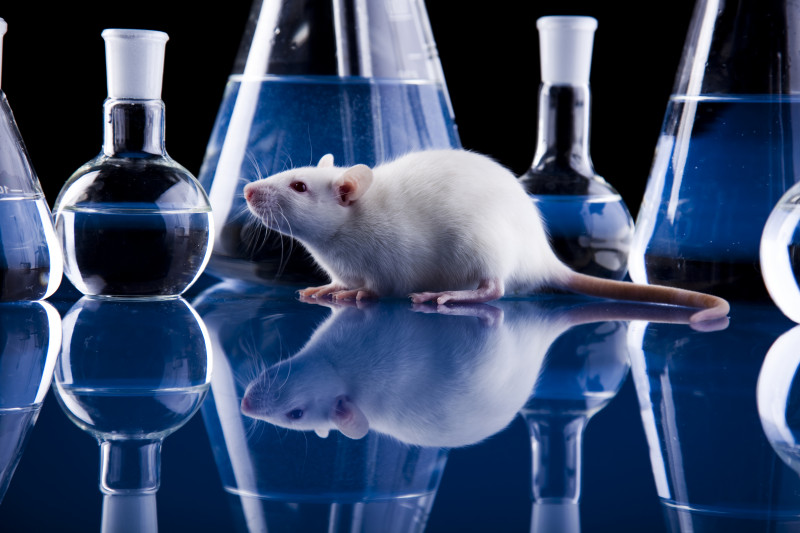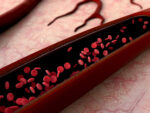Low Oxygen Increases Chloride Levels in PASMCs in Animal Study

Sebastian Duda/Shutterstock
Higher levels of chloride in pulmonary artery smooth muscle cells (PASMCs) may contribute to the development of pulmonary hypertension (PH) after exposure to low oxygen (hypoxia), a study in a rat model suggested.
The study, “Increased intracellular Cl− concentration in pulmonary arterial myocytes is associated with chronic hypoxic pulmonary hypertension,” was published in the American Journal of Physiology-Cell Physiology.
Experiencing reduced oxygen levels for a lengthy period is known to cause changes to the structure of the arteries in the lungs. Many of these changes have been shown, in previous studies, to be associated with abnormal levels of certain ions in PASMCs, as well as dysregulated ion channels. That, in turn, ultimately contributes to increased lung vasoconstriction, or blood vessel tightening.
Chloride, a type of electrolyte, is involved in several vital biological processes. Its accumulation and the activation of chloride channels in vascular smooth muscle cells, which line arteries, ultimately cause smooth muscle contraction, according to researchers.
However, despite the importance of chloride, little is known about its concentration or transporters in PASMCs, or how it impacts the function of these cells.
“No information is available on whether the [cellular chloride concentration] in PASMCs is altered in disease states such as chronic hypoxic pulmonary hypertension (CHPH), which occurs in many chronic lung diseases,” the researchers wrote.
To tackle these questions, a team of scientists from Johns Hopkins University School of Medicine, in Baltimore, analyzed the gene expression (activity) of chloride transporters in the lung artery smooth muscle of rats exposed to chronic hypoxia, as well as the chloride concentration in their PASMCs.
To induce CHPH, the rats were placed in a hypoxic chamber for three to four weeks.
In most mammal cells, cation-chloride cotransporters (CCCs) are the major regulators of this electrolyte’s concentrations. These channels are encoded by the SLC12A gene family and include sodium-potassium-chloride cotransporters (NKCC) 1 to 7, and the potassium-chloride cotransporters (KCC) 1 to 4.
The researchers observed high expression of Slc12a2, 4, 6, and 7, very low activity of Slc12a5, and no expression of Slc12a1 and Slc12a3 in pulmonary arteries from control rats that had not been exposed to hypoxia.
Notably, the results showed that chronic hypoxia doubled the gene expression of Slc12a2 (which codes for NKCC1) and significantly lowered Slc12a7 expression (KCC4) by about 60% in pulmonary artery smooth muscle.
NKCC1 moves one sodium, one potassium, and two chloride ions into the cell, while KCCs transport one potassium and one chloride ion out of the cell. As such, the results indicate that chronic hypoxia favors the net influx of chloride into the cell by increasing NKCC1 activity and decreasing KCC4.
Besides CCCs, chloride/bicarbonate exchangers, encoded in part by the SLC4A gene family, also can mediate chloride transport across the cell membrane. Chronic hypoxia had no effect on the expression of Slc4a genes.
Next, the team assessed if altered NKCC1 and KCC4 expressions could influence chloride levels under chronic hypoxia. In their first set of experiments, they used a chloride-sensitive dye to quantify the electrolyte’s levels. The mean concentration of chloride was found to be higher in the PASMCs of chronic hypoxic rats compared with PASMCs from control rats (56.1 vs. 45.0 millimolar, mM).
To confirm these results, the team employed a different method, called gramicidin-perforated patch clamp. This technique takes advantage of the selective properties of gramicidin, an antibiotic with the ability to create pores in the cell membrane that do not allow the passage anions, such as chloride.
Analysis from these experiments validated the previous results. The concentration of chloride was significantly higher in the PASMCs of chronic hypoxia rats than in those from controls (57.8 versus 46.7 mM).
“To the best of our knowledge, this is the first report on the gene expression profile of plasma membrane Cl− [chloride] transporters in the pulmonary arterial smooth muscle and on the assessment of [cellular chloride concentrations] in single living PASMCs,” the investigators wrote.
“This study … provides the first evidence that the intracellular Cl− homeostasis in PASMCs is altered in chronic hypoxic pulmonary hypertension,” the team concluded.
“Future studies are warranted to further examine this hypothesis and elucidate the role of altered PASMC Cl− homeostasis in the [processes] of chronic hypoxic pulmonary hypertension associated with many chronic lung diseases,” they added.









